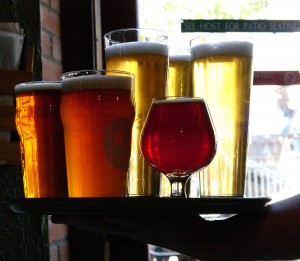
“The casual dining segment is underperforming the craft growth that we’re seeing in other parts of on-premise,” Pecoriello said.
Culled daily from data of thousands of on-premise locations, with more than 1 billion transactions collected annually, GuestMetrics offers information that could help brands, new and established alike, approach the marketplace by identifying numerical trends.
Pecoriello said that while food sales dominate during breakfast (5 a.m. to 11 a.m.) and lunch (11 a.m. to 3 p.m.), beer sales spike in the later hours of the day. During happy hour, from 3 p.m. to 6 p.m., beer accounts for 11 percent of an on-premise check, while food drops from 98 percent at breakfast and 85 percent at lunch, to just 67 percent for happy hour and dinner. Happy hour also accounts for 33 percent of the alcohol sold during this time, which is the best performing period for beer.
Pecoriello also said that checks that feature just alcohol average $20 and those that feature just food average $26. However, when the check features food and any beer, its average price is $73. When the check features food and craft beer, its average price is $86, and when the check features imported beer, its average price is $97.
GuestMetrics also analyzes trends in beer styles, which is notable considering the fluctuating nature of the craft beer industry. Pecoriello stated that lagers account for 67 percent of beer units sold in on-premise accounts, followed by ales at 20.4 percent and cider/flavored malt beverages (FMB), premium alcoholic beverages (PAB) and seasonals at 12.6 percent. Despite the dominance of lagers, the style contracted in units sold by 5.2 percent, while units of ale — a style that is closely identified with craft beer in many analyses — grew 4.2 percent; units of cider, FMB, PAB and seasonal grew 2.9 percent.
There is also a pricing divergence between lagers, ales and cider, FMB, PAB and seasonals. While the average on-premise lager is priced at $4.51, ales are priced at $5.62 and cider, FMB, PAB and seasonal are priced at $5.17.
When it comes to retail pricing, it appears that there are three tiers of beer. The first includes craft beer (with an average price of $5.52), imports ($5.45), FMB, PAB and cider ($5.07), and premium plus ($5.00). Meanwhile, non-alcoholic beer ($4.35), premium regular ($4.13) and premium light ($4.05) find themselves in the middle class. Value beers ($3.06) dwell in the basement.
More statistics from Pecoriello’s seminar will follow in future posts.
